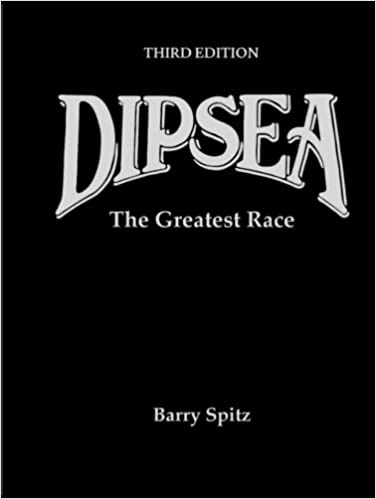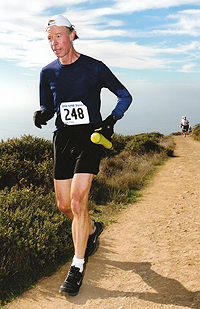The new (2022) Third Edition of Dipsea, The Greatest Race fully updates the book from the earlier Centennial (2010) and First (1993) editions. All statistical tables have been revised, and new images, many never before published, are included.
The author will be happy to personally inscribe each copy ordered, or just autograph. Books are $40 each, which includes sales tax and shipping paid by the author.
By Barry Spitz
Dipsea: The Greatest Race
The Dipsea stands behind only the Boston Marathon among American footraces in longevity and lore, and alone atop trail races.
The Dipsea Race was born from a bet in 1904 between two members of San Francisco’s Olympic Club: Who could be swiftest from the train depot in Mill Valley, gateway to Mt. Tamalpais trails, to the newly opened Dipsea Inn on the Pacific Ocean at Stinson Beach? A group of Club members then organized themselves as the Dipsea Indians and staged the first Dipsea Race on November 19, 1905.
The Dipsea has since survived many challenges–two years missed during the 1930’s Depression, four more during World War II when much of Mt. Tam was closed by the military, postponement and near cancellation during a permit battle in 1977, and numerous tough permit issues after–but the Race has endured. Why?
There is the spectacular course. While there are now many races through stunning sites, the Dipsea was the pioneer. Originally all on private property, the seven-mile route is now part of Mt. Tamalpais State Park, Muir Woods National Monument, and the Golden Gate National Recreation Area. The names of course sections–the Steps, Windy Gap, Suicide, Dynamite, the Hogsback, the Rainforest, Cardiac, the Swoop, Steep Ravine, the Moors, the Grotto–say it all. In the spirit of the Race’s origin, runners have traditionally been free to follow any route they wish.
This course–precipitously steep, narrow, slippery, root-covered, crowded–is also dangerous, and injuries are commonplace. In 2002, for example, two champions, with five total victories among them, ended up in adjacent hospital rooms, and evacuation helicopters landed on the beach after the local ambulance fleet was depleted.
The Race has also always been handicapped, with slower runners assigned head start minutes. This has made champions of unknowns, and an eight-year old girl and a 64-year-old woman, a boy of 10 and a man of 72. Indeed, the Dipsea has played an historic role in women’s running. Decades before they were officially allowed into any other distance races in the United States, women raced over the Dipsea Trail.
Author & Runner
Barry Spitz
I have been the Dipsea Race finish line and awards ceremony announcer since 1982, and the Race’s official historian. As a volunteer, I have never been able to run the actual Dipsea, but have completed more than 20 Practice Dipsea, Double Dipsea, and Quadruple Dipsea races. In 1992, the Dipsea Race honored me with the James Farren, Jr. Trophy, and in 2002, with the James Hauke “Red-Tailed Hawk” Trophy. In 2014, I was I inducted into the Dipsea Race Hall of Fame. In 2001, I received a “Milley” Award from the City of Mill Valley.
My other book titles include: Mount Tamalpais Trails (seven printings since 1990); San Anselmo, A Pictorial History; Mill Valley, The Early Years; Marin, A History; Open Spaces, Lands of the Marin County Open Space District and To Save A Mountain, The 100-Year Battle For Mt. Tamalpais.
I have lived in San Anselmo since 1975. I am married (Pamela) and have two daughters, Sally and Lily.
Published By
Potrero Meadow Publishing
San Anselmo, CA 94960

